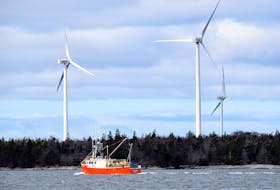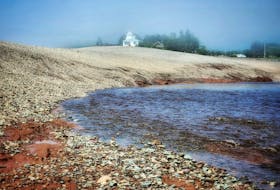TRURO, N.S. – Toxic algae blooms that have polluted Mattatall Lake in recent years were visibly absent this summer, an indication that the water could be correcting itself.
“I noticed a big difference,” said Wade Parker, a member of a stewardship group of lake property owners who have been involved with working to identify the cause of the algae pollution.
“You could swim in it no problem all year. And the clarity was really good.”
The algae blooms cropped up in recent years following nearby forest clear-cutting activity and the subsequent spraying of glyphosate, which some feel may have created the problem.
Similar issues have been reported in other Nova Scotia Lakes, including in Kings County and the Municipality of Chester.
While combined efforts by the Department of Environment (DoE) and Dalhousie University have identified the blue-green algae as toxic cyanobacteria blooms, the actual cause has yet to be determined.
“We’ve conducted numerous inspections and tests to help identify potential sources of nutrients and to ensure best practices have been employed to mitigate effects from activities in the watershed,” said DoE spokeswoman Chrissy Matheson.
She said the department has commissioned Dalhousie University to conduct a water study on Mattatall Lake that will help assess relative contributions from potential nutrient sources and that work is ongoing.
A stakeholder meeting is planned for next month to discuss results of the Dalhousie study.
Parker said he also spoke with a DoE representative who suggested the condition of the lake this year is a promising sign but it still too early for any long-term conclusions.
“It’s a wait and see. He said if you get two or three years where it is clear you might be able to consider yourself out of the woods,” Parker said.
“It’s a good sign, right? And hopefully that continues.”
In addition to a vast increase in water clarity – to a depth of approximately five metres – Parker also noticed grass growing on the bottom of the lake and the return of a frog population.
“I’m hoping for the best,” he said.








